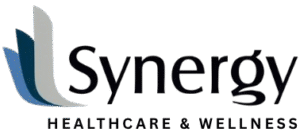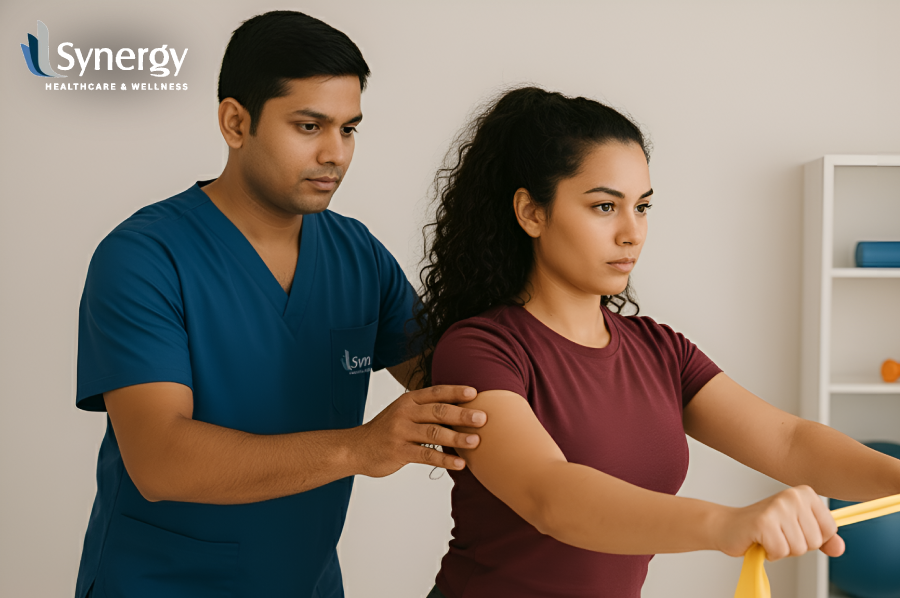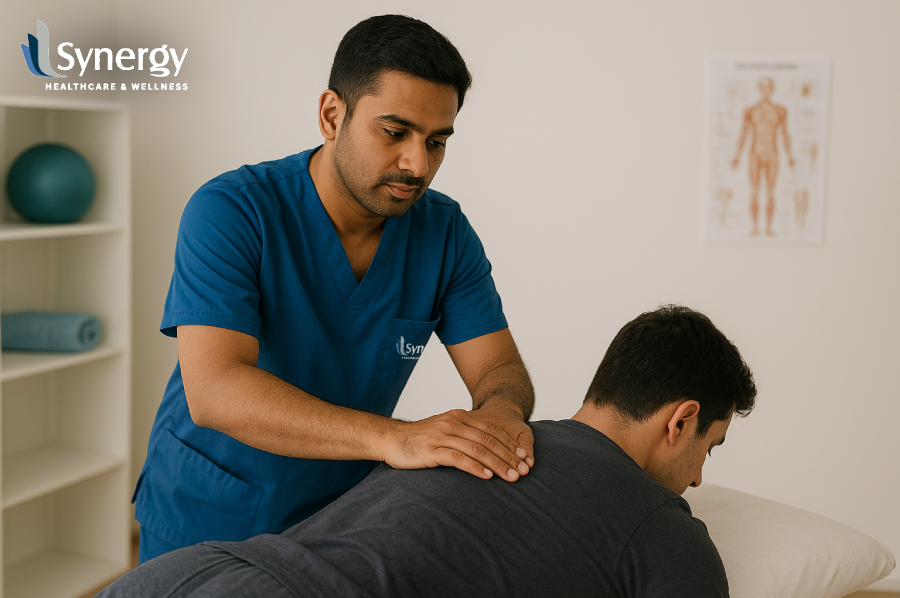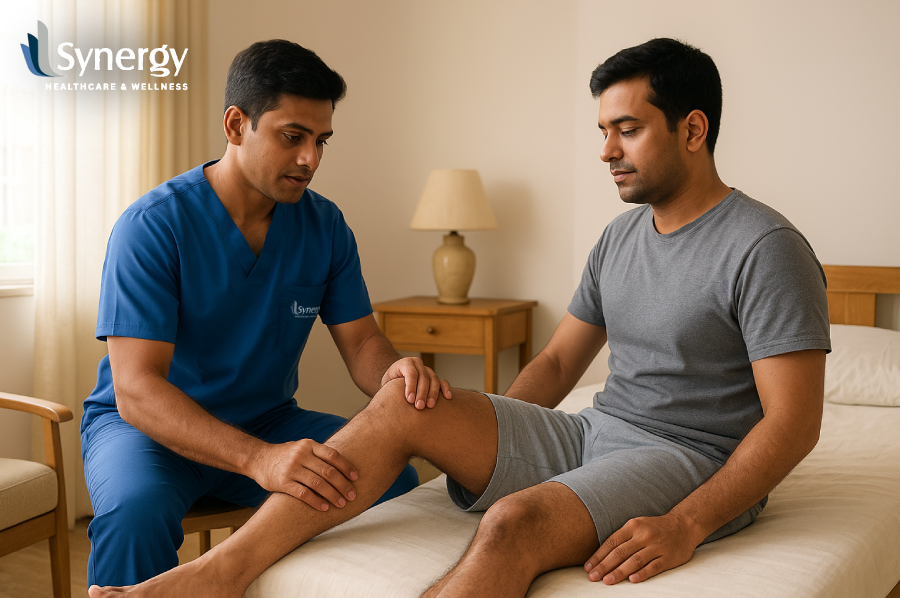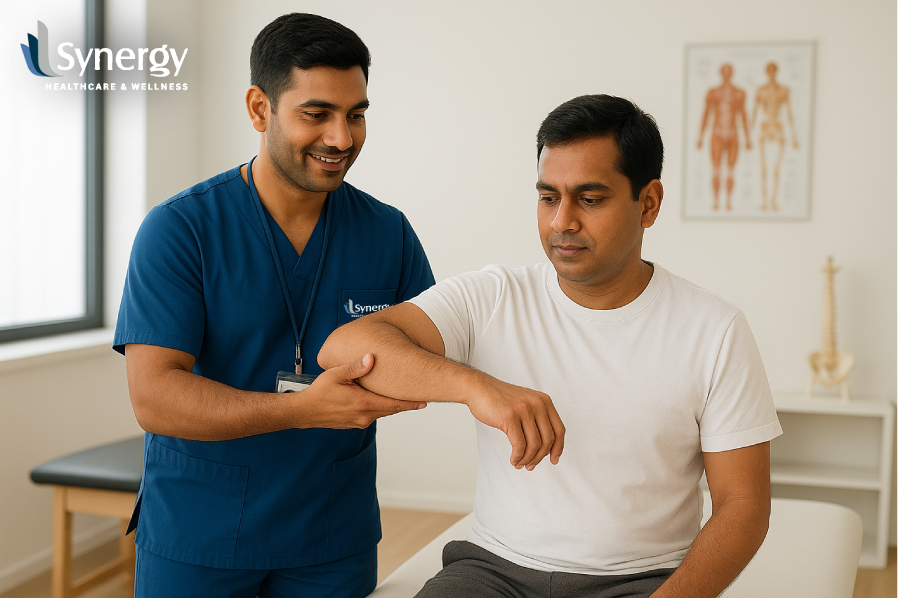Misunderstandings about physiotherapy often delay recovery. This article lists common myths people hold, explains why they are misleading, and sets out the practical facts. Use it to choose sensible steps, ask better questions, and follow a plan you can keep.
Let’s Begin
When pain interrupts work or family life, people often try quick fixes. A tip from a friend, a video online, or a bold claim can sound convincing. Good care begins with clear thinking. If you have been searching for Physiotherapy Myths, Common Physiotherapy Misconceptions, or Physiotherapy Facts, use the notes below to test what you hear and to choose actions that suit your body.
Physiotherapy Myths vs Facts
Myth 1: Physiotherapy is just massage or heat
Some people expect only hands-on relief or a few minutes with a machine. These may ease discomfort for a short time. The fact is that lasting change comes from learning how to move, building strength, and practising safely at home. Manual work and modalities can support this, but they do not replace it.
Myth 2: You must stop all activity until pain is zero
A brief rest can calm a flare, yet a long rest weakens muscles and stiffens joints. The fact is that gentle, graded movement helps most problems. The right dose is the amount you can repeat tomorrow without a setback.
Myth 3: One or two sessions should fix it
Tissues adapt over weeks. A quick improvement may happen, but durable results need steady practice and review. Expect a clear plan, a timeline, and checkpoints rather than a single miracle session.
Myth 4: Treatment has to hurt to work
Sharp pain is not a sign of progress. Productive exercise feels like effort, not injury. If symptoms spike and linger, the load is too high or the movement is not right. Good plans adjust early.
Myth 5: Machines cure faster than exercise
Ultrasound, IFT, and taping can be useful in select cases. They reduce symptoms for a period. The fact is that capacity improves when you strengthen, stretch as needed, and change unhelpful habits. Devices cannot do your repetitions for you.
Myth 6: A scan gives the full answer
Reports often list age-related changes seen in many people without pain. Decisions should combine your story, the examination, and your response to a trial of care. Scans are helpful when red flags or specific injuries are suspected.
Myth 7: Everyone gets the same exercise sheet
Two people with the same diagnosis can have different limits and goals. A desk worker and a mason will not need the same plan. Your programme should match your stage, your work, and the movements you want to regain.
Myth 8: Therapy starts only after the wound is fully healed
After many surgeries, early guided movement is part of healing. The programme respects precautions and builds gradually. Waiting too long can make stiffness harder to reverse. Your therapist will time each step with your surgeon’s advice.
Myth 9: Older adults cannot gain strength or balance
Age changes tissues, but improvement is possible at every stage. With the right dose and regular practice, strength, mobility, and confidence can rise together. Progress is measured in function, not only in the gym.
Myth 10: Core exercises alone fix back pain
A strong trunk helps, but backs are influenced by hips, mid-back mobility, sleep, stress, and workload. Well-rounded plans work better than any single focus.
Myth 11: Posture alone causes pain
There is no perfect sitting or standing pose for the entire day. Bodies prefer variety. Change positions often, break up long tasks, and build strength so you tolerate the day better.
Myth 12: Belts, braces, and supports solve the problem
Supports can help with short tasks. Over-reliance reduces muscle activity. The aim is to use them briefly while you train your body to handle the load on its own.
Myth 13: Lifting weights is harmful if joints hurt
Heavy, sudden lifts can provoke symptoms, but controlled strength training is one of the best tools for joint health. Start light, learn good form, and progress slowly.
Myth 14: Home programmes do not work
They work when they are clear, short, and repeated. Two or three drills with exact sets and repetitions, practised on most days, often beat long, complicated routines that are hard to keep.
Myth 15: Physiotherapy is only for athletes or after injuries
Therapy also prevents problems, supports long-sitting jobs, guides a safe return to sport, and helps long-term conditions such as arthritis. You do not need to wait for a crisis to ask for help.
Goal-Oriented Physiotherapy Made Practical
At Synergy Healthcare and Wellness, we keep care practical. Your first visit includes a careful interview and a movement screen. Together, we choose two or three goals that matter in daily life. Once consultation is complete, we begin sessions, which may include manual techniques when applicable. However, the focus is on teaching form, pacing, and simple ways to incorporate practice into a busy week. We offer clinic and home options and adjust the plan as you improve.
Summing Up
Myths grow when people are unsure. Facts give you a calmer path. When you understand why movement helps, how to dose exercise, and when to seek tests, you stop chasing quick fixes and start building strength that lasts. Keep the plan simple, be consistent, and let measured progress guide the next step.
FAQ’s
1. Is soreness after new exercises normal?
Mild, short-lived soreness can be expected. Sharp pain or symptoms that last beyond the limits you agreed means the load should be reduced or the movement changed.
2. When is imaging necessary?
Scans are considered when specific signs suggest a fracture, significant ligament injury, nerve compromise, or other red flags.
3. Can I continue yoga or gym work during treatment?
Yes, with sensible adjustments. Your plan will include safe substitutes and a progression so you remain active without provoking symptoms.
4. How soon should I expect a change?
Many people notice early improvements in comfort or confidence within a few sessions, then see larger functional gains over weeks with steady practice. Timelines are set at the first review.
